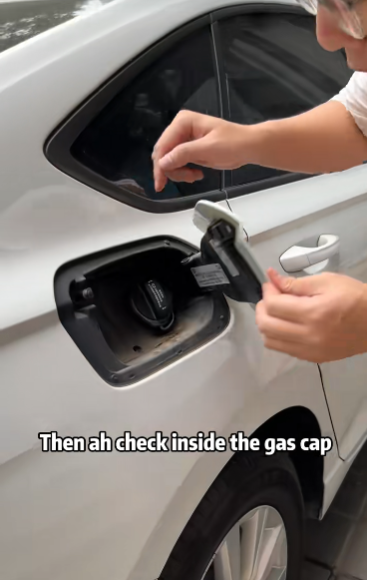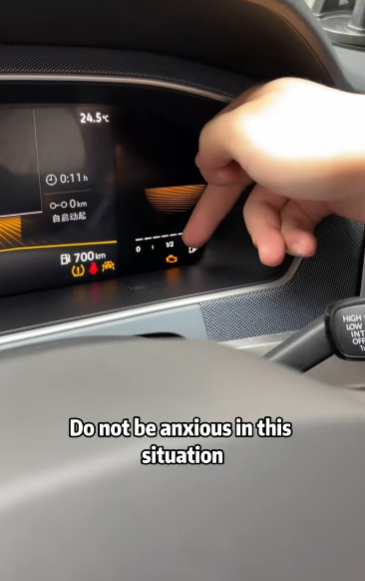
When was the last time you gave any thought to your car’s fuel tank cap? Most of us probably twist it open, fill up the tank, and screw it back on without a second thought. Yet, that small plastic or metal cap holds more importance than you might imagine—and it even has a few secrets of its own.
Let’s pop the lid on what makes this humble component so essential, and reveal some surprising facts and hidden functions that can make a big difference in your vehicle’s health and your driving experience.
1. It’s Not Just a Lid—It’s a Seal
The fuel tank cap is designed to do more than simply cover the fuel tank opening. It serves as a tightly fitted seal that keeps fuel from evaporating into the air and prevents outside air or contaminants from entering the tank.
Modern vehicles are equipped with a sealed fuel system, which means any air leaks—especially at the fuel cap—can trigger problems. A loose or faulty cap can result in pressure imbalances, fuel loss, and even trigger the “Check Engine” light.
In fact, one of the most common reasons for that ominous dashboard warning is a gas cap that isn’t tightened properly.

2. Evaporative Emissions and Environmental Protection
Your fuel cap is a critical part of the vehicle’s Evaporative Emission Control System (EVAP). This system is designed to prevent fuel vapors from escaping into the atmosphere.
When your cap is in place and sealed properly, it locks in those vapors, helping to reduce your carbon footprint and ensuring your vehicle meets environmental standards.
If your cap is cracked, damaged, or missing entirely, vapors can leak, increasing pollution and potentially causing your car to fail emissions tests.
3. Your Cap Could Be Costing You Money
A poorly fitting or damaged gas cap can allow fuel to evaporate, especially on hot days. Over time, this can lead to noticeable fuel loss—and that means more frequent trips to the gas station.
According to some estimates, a faulty or missing gas cap can allow up to 30 gallons of fuel to evaporate each year, depending on your climate and driving habits. That’s not just wasteful—it’s expensive.

4. It Plays a Role in Fuel System Pressure
Today’s fuel-injected engines rely on consistent pressure throughout the fuel system to operate efficiently. A secure gas cap helps maintain this pressure, keeping your engine running smoothly.
A loose or non-sealing cap can cause inconsistent pressure levels, which might lead to poor performance, sluggish acceleration, or even engine misfires.
Think of the cap as the plug at the end of a hose. If it’s not tight, the pressure escapes—and the whole system suffers.
5. Ever Wonder Why It Clicks? That’s a Built-in Safety Feature
If you’ve noticed your cap makes a clicking sound when you tighten it, that’s not just a quirky design feature. It’s a deliberate safety mechanism.
The click indicates the cap has been secured properly. It helps drivers avoid overtightening, which could damage the seal, or under-tightening, which could allow vapors to leak.
If your cap doesn’t click anymore, it could be a sign the internal mechanism has worn out. That’s a cue to consider replacing it.
6. It Can Actually Save You From an Expensive Repair
When a vehicle’s check engine light comes on, many drivers worry about costly repairs. Interestingly, a faulty or missing gas cap is often one of the first things mechanics check.
Replacing a worn-out cap can sometimes fix the issue instantly—no need for diagnostics or part replacements. It’s one of the cheapest solutions to a potentially expensive-looking problem.

7. Did You Know Your Car Tells You Which Side the Fuel Cap Is On?
This might not be a secret about the cap itself, but it’s one that’s tied closely to your experience at the gas station.
Most cars have a small fuel pump icon on the dashboard, and next to it is usually an arrow. That arrow points to the side of the vehicle where the fuel cap is located.
No more awkward stretching with the pump hose or circling the station looking for the “right” side!
8. There Are Different Types of Fuel Caps
Not all gas caps are the same. Some are vented, allowing controlled airflow to equalize tank pressure, while others are non-vented and depend on the car’s EVAP system to manage air pressure.
There are also locking gas caps, which offer protection against fuel theft and tampering. These are especially useful for fleet vehicles, trucks, or cars parked in public areas for long periods.
And don’t forget capless systems, now found in some newer vehicles. While they look like there’s no cap at all, these systems have internal flaps that seal automatically when the fuel nozzle is removed.
9. Replacing It Is Cheap—and Often Necessary
Because of wear and tear, the rubber seal on the cap can degrade over time. The threads might wear down, or the clicking mechanism could fail. That’s why replacing your gas cap every few years—or sooner if you notice problems—is a smart move.
A brand-new cap usually costs between $10 and $30, depending on your vehicle. Compare that to potential issues it can prevent, and it’s a wise, low-cost investment in your car’s longevity.

10. Quick Tips for Car Owners
Here are a few tips to make the most of your fuel cap and avoid unnecessary problems:
- Always tighten until it clicks. This ensures a proper seal.
- Check the rubber seal on the cap occasionally for cracks or signs of wear.
- If your check engine light comes on, try removing and retightening the cap first before visiting a mechanic.
- Consider a locking cap if you’re worried about fuel theft or tampering.
- Replace damaged or missing caps immediately. Don’t drive without one!
In Conclusion: Small Part, Big Role
It might be one of the smallest parts of your vehicle, but the fuel tank cap plays a mighty role. From protecting the environment to saving you money, maintaining performance, and avoiding costly repairs, this little component is more important than it seems.
So the next time you stop for gas, give your fuel cap a second look. Make sure it’s in good shape, properly tightened, and doing its job. Because sometimes, the smallest secrets hide in plain sight—and in this case, it’s under that unassuming twist of plastic or metal that you’ve probably ignored for years.
The hidden secret of your car’s fuel tank cap? It’s not just a lid—it’s a vital guardian of your car’s efficiency, safety, and economy.



